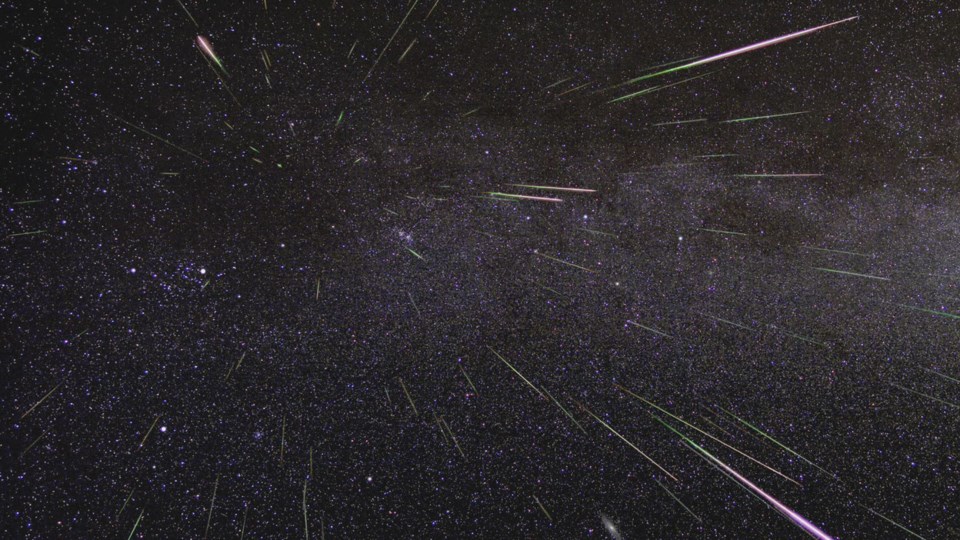Showers are in the forecast for Sunday night and early Monday morning, but happily for stargazers, we're not talking about rain.
The best time this year to get a glimpse of the Perseid Meteor Shower starts couple of hours after sunset this Sunday, and continues until sunrise Monday. And the weather forecast looks good, with a partly cloudy sky expected.
The event happens every year around this time because it's when the Earth enters into the debris left behind by the Comet Swift-Tuttle, which passes by every 133 years.
“Each swing through the inner solar system can leave trillions of small particles in its wake,” according to information from NASA's website. “When the Earth crosses paths with Swift-Tuttle’s debris, specks of comet-stuff hit Earth’s atmosphere and disintegrate in flashes of light. These meteors are called Perseids because they seem to fly out of the constellation Perseus.”
Lucie Robillard, science communicator for the planetarium at Science North, says they're holding a star party beginning at 9 p.m. Sunday that's free and open to the public.
“We're going to have it at Dynamic Earth, where it's nice and dark," Robillard said. "We'll be there with the Sudbury Astronomy Club. We'll have telescopes set up to look at the planets. But we'll also be able to see the meteor shower, hopefully, if it's dark enough and we don't get any clouds in the way."
While there will be a couple of telescopes on site, Robillard said the best way to see the shower is with the naked eye.
“If you try to look for them through a telescope or binoculars it's harder because they streak by so fast,” she said. "And it is better if you go out of town where there's less light pollution. Sudbury is quite nice in that once you get out of town -- and not that far out -- you get to see the sky a lot better."
Here's a light pollution map that shows areas most and least affected by light.
It's best to wait a couple of hours after sunset to get the best view. On Sunday, Robillard said they'll have a few presentations before heading out to look at the sky.
"We'll go inside Dynamic Earth, to kind of just talk about what meteor showers are, and what the difference is between meteor shows and comets, stuff like that," she said.
The Perseids actually began July 17 and continue until Aug. 24, but the Earth will pass through the thickest stream of debris Aug. 12-13, offering the best chance to see the show.
Anyone planning to attend Sunday night's event might want to bring a chair, Robillard said. And they'll be able to use the telescopes to view the planets in between watching the meteors light up.
The next event in the star calendar is a big event planned in Killarney Provincial Park on Sept. 22, an ideal area to view the night sky since it's far from big city lights.
"It's called Stars Over Killarney," Robillard said. "If people are interested, they can rent a campground there. It just costs the price to enter the park.
"Science North is also organizing a shuttle leaving in the afternoon and coming back later in the evening."
@darrenmacd
